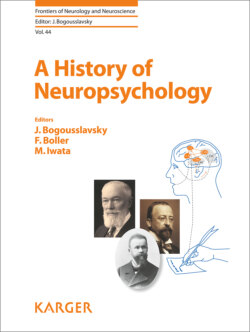Читать книгу A History of Neuropsychology - Группа авторов - Страница 16
На сайте Литреса книга снята с продажи.
What Was the Underlying Deficit?
ОглавлениеLeborgne could not speak, but what was the underlying deficit? To understand Broca’s answer, we must consider the state of theory and evidence on another issue – the motor excitability of the cerebral cortex. In the 1860s, this was still unknown. No one, that is, had distinguished between an anterior “motor” region and a posterior “somatosensory” region, approximately encompassing, respectively, the pre- and post-central gyri. That revelation came later, most importantly in 1870 from Fritsch and Hitzig’s [28] experiments on dogs, and, in 1873, from Ferrier’s [29] experiments on monkeys. Until then, the cortex was seen as purely for mental acts, with the “motor” centers lying below in the corpus striatum and other basal ganglia. In 1864, it was how John Hughlings-Jackson explained the frequent co-occurrence of right-hemiplegia with speech loss:
The seat of the faculty of (speech) is near the upper part of the motor tract – the corpus striatum; so that, from mere relation of contiguity, (speech and motor functions) often suffer together ([30], p 39).
Broca [17] saw Leborgne’s symptoms the same way. His lips and tongue were not paralyzed because he could use them for other acts, but he could not remember how to use them for speech. In declaring that we speak with the left hemisphere and in locating its seat in F3, Broca meant it was where memories were stored for performing linguistic-articulatory acts. Leborgne’s aphasia, therefore, was a memory disorder. What was a motor disorder was his hemiplegia, signifying that his lesion extended into the corpus striatum, “the motor organ nearest the anterior lobes” (p 347).
